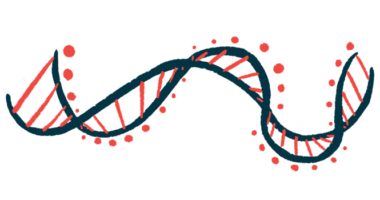CFTR Protein Dynamic, Changing Shapes in Ways Affecting Disease

Cystic fibrosis transmembrane conductance regulator (CFTR), the protein that is mutated in cystic fibrosis (CF), is not as rigid a structure as previously thought, but rather one that may transition between shapes, a molecular study has found.
Under certain conditions — such as the most common CF-causing mutation, F508del — this transition may predispose the protein to fold into an incorrect shape and end up getting degraded.
These findings change the current understanding of the structure and function of CFTR, with implications for the development of new therapies that act upon the mutated protein.
The study, “A topological switch in CFTR modulates channel activity and sensitivity to unfolding,” published in the journal Nature Chemical Biology, was led by researchers at the Université Libre de Bruxelles (ULB), in Belgium.
CFTR is an ion channel, a protein shaped like a short tube that crosses a cell’s membrane and controls the movement of ions, such as chloride, through the membrane. That movement is key for a proper water balance in various organs. In the lungs, for example, it is essential for the production of a lubricating, watery mucus that helps keep the airways clean.
In people with CF, mutations in the CFTR gene — which provides the instructions to make the CFTR protein — can prevent the protein from working properly or even being made at all. When these problems occur, a thicker-than-usual mucus will accumulate in the lungs and other organs, leading to CF symptoms.
According to a ULB press release, scientists have worked for years to understand how a single mutation such as F508del can lead to CFTR being assembled into an entirely wrong shape, or conformation.
To know more, researchers in Belgium and the U.K. looked at CFTR at the single-molecule level. Using a technique that relies on the use of fluorophores, or fluorescent chemical compounds, they found the protein may adopt not just one, but at least two different conformations. While the new conformation had not been seen before, it actually increased the activity of the ion channel.
“This alternate conformation might have evolved for functional reasons,” the researchers wrote, later adding that “it may also bring about increased vulnerability to misfolding, especially in the presence of destabilizing mutations such as F508del.”
Indeed, the transition was found to depend on a small region of the CFTR protein that is affected by the F508del mutation. Therefore, contrary to what was previously believed, F508del may not affect the protein shape or structure but rather the switch between shapes.
This switch “might constitute a new mechanism to modulate protein function that could extend to other biological systems,” the researchers wrote.
For people with CF, it might mean new opportunities for “conformation-specific therapeutic approaches for F508del and possibly other related CF-causing mutations,” the team concluded.







